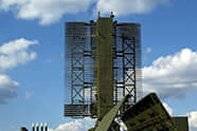Challenges in SDI Video Streaming Designs
Serial digital interface is a standard for high quality lossless digital video transmission. In SDI Video Streaming designs, signals are uncompressed and self-synchronizing between the transmitter and the receiver.
SDI (Serial Digital Interface) is a professional video streaming signal that’s preferred in production environments because of its longer range (up to 300 feet) and reliability. SDI video streaming refers to the process of capturing, transmitting, and receiving high-quality video signals over a digital interface. SDI video streaming is a widely used method for transmitting uncompressed digital video signals over short distances. SDI technology is widely used in professional broadcasting environments due to its ability to deliver uncompressed video with low latency and high reliability and quality while ensuring compatibility with a wide range of professional equipment. SDI designs supports high-definition (HD) and ultra-high-definition (UHD) video formats, ensuring excellent image quality. SDI video streaming is preferred in production environments because of its longer range (up to 300 feet) and reliability. It is used for transmission of uncompressed, unencrypted digital video signals or for packetized data. SDI is used to connect together different pieces of equipment such as recorders, monitors, PCs and vision mixers. The greatest advantage of SDI technology is being able to transfer high- definition video signals without any loss of quality. This is due to the fact that the video is transferred in uncompressed format. A video network based on SDI Video can be easily put together with a readily available 75 ohm co-axial cable between a transmitter and a receiver. Because of these benefits, SDI Video streaming designs are rapidly becoming the leading video format for digital video transmission. Depending on the data rate there are different variants of SDI video streaming.

- SD-SDI carries NTSC/PAL video data with a data rate of 270Mbps
- 3G-SDI Video Streaming carries 1080p videos with a data rate of 2.97Gbps
- Dual – SDI carries two independent HD video streams in a single link. This results in a data rate of 2.97Gbps
- HD-SDI carries High Definition videos with a data rate of 1.485Gbps
Mistral offers Design Services for Video Streaming applications. One of our recent designs involved SDI Video Streaming (transmit and receive), both working at 3G data rate.
Solution Offered
The scope of this SDI Video Streaming project involved output of processed video streams to an SDI interface. We integrated a high-end video processor from TI along with a Spartan-6 FPGA from Xilinx to achieve the required SDI Video Streaming. SDI video streaming was implemented by integrating an SDI core inside the FPGA. The SDI Streaming core mainly uses two clocks, one a Reference clock and the other a pixel clock. The reference clock is a fixed LVDS clock input while the pixel clock is the one to which the parallel video data is synchronized from the processor. For proper functionality of an SDI Video Streaming application, the SDI core expects both data and reference clocks to be in complete phase synchronization.
SDI Video Streaming – Design Challenges
The Design Challenges that we faced in bringing up SDI-TX was w.r.t achieving synchronization between the processor’s pixel clock and the reference clock fed to the SDI core. To mitigate this, we added a FIFO in FPGA and used an internally generated clock inside the SDI core, as a FIFO read clock, with pixel clock being used as FIFO write clock. Although this resulted in phase synchronization, there were frequent underflow and overflow of FIFO due to minute frequency jitter among these clocks. To eliminate this, we had to find a common clock source for the pixel clock and the SDI core’s reference clock. To accomplish this, we connected a clock from FPGA, generated from SDI core reference clock, to an auxiliary clock input of the processor. Since the processor now derived the pixel clock using this auxiliary clock input, the FIFO overflow/ underflow issue got resolved.
Synchronization with the processor was not an issue for the SDI-RX path since the SDI-Core in itself generates pixel clock. The second major problem that we encountered was with respect to dual SDI video. To give DS-SDI output, SDI Video Streaming requires two parallel video inputs which are frame synchronized. In our design, the processor was giving out two parallel video outputs to FPGA and it was not possible to achieve frame synchronization at the source. Thus, the FPGA had to align the two video frames before routing it to SDI core. Here, we used a DDR3 connected to FPGA to achieve frame alignment. One of the incoming SDI Video inputs was written to DDR3 continuously beginning from the start of the frame, along with checking for start of frame in second video stream.
Once the start-of-frame in second video data is detected, this stream along with the first stream, is sent to SDI core for generation of DS-SDI. The data from the first stream is not live in the sense that a stored frame is being read back from DDR3. It has to be noted that the size of the DDR3 memory must be big enough to store one complete frame. Design Services for Video Streaming not only involves proper understanding of the SDI core architecture but also careful high-speed design. In addition, a major aspect to getting the interface to work flawlessly is a robust PCB design. This becomes extremely important since the data rate in SDI line can go up to 2.97Gbps. The main objective of PCB layout design is to achieve uniform impedance along the entire trace. This included careful selection of series components on the trace, trace width selection, trace separation for differential lines etc. Since our design involved both SDI video receive and transmit, we made sure that there was good enough separation between TX and RX circuits to avoid any interference.
*Published in EE Times India




